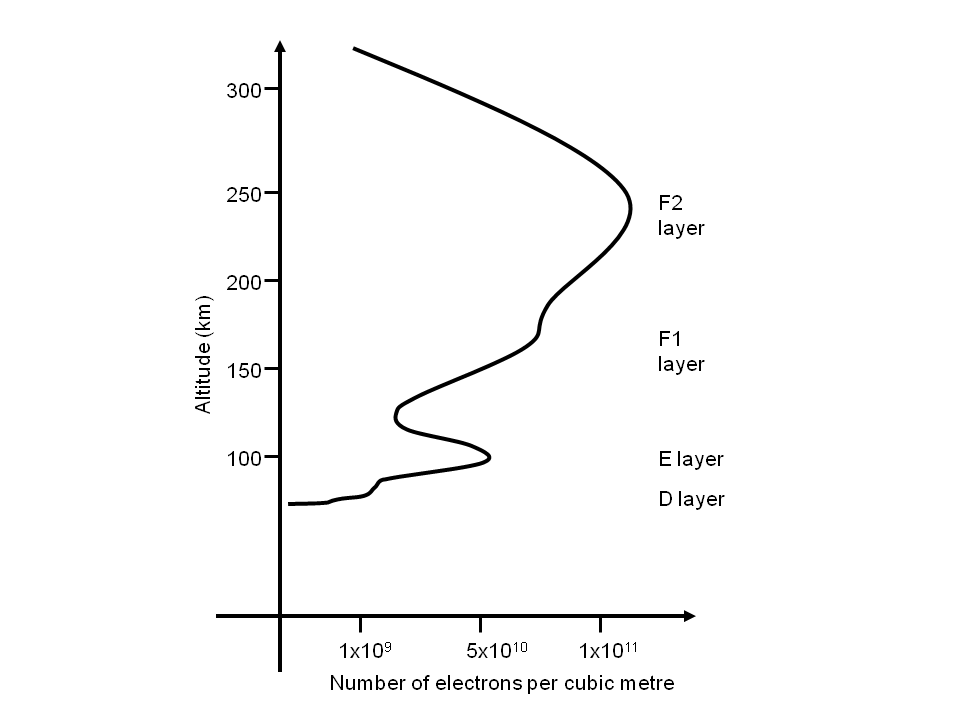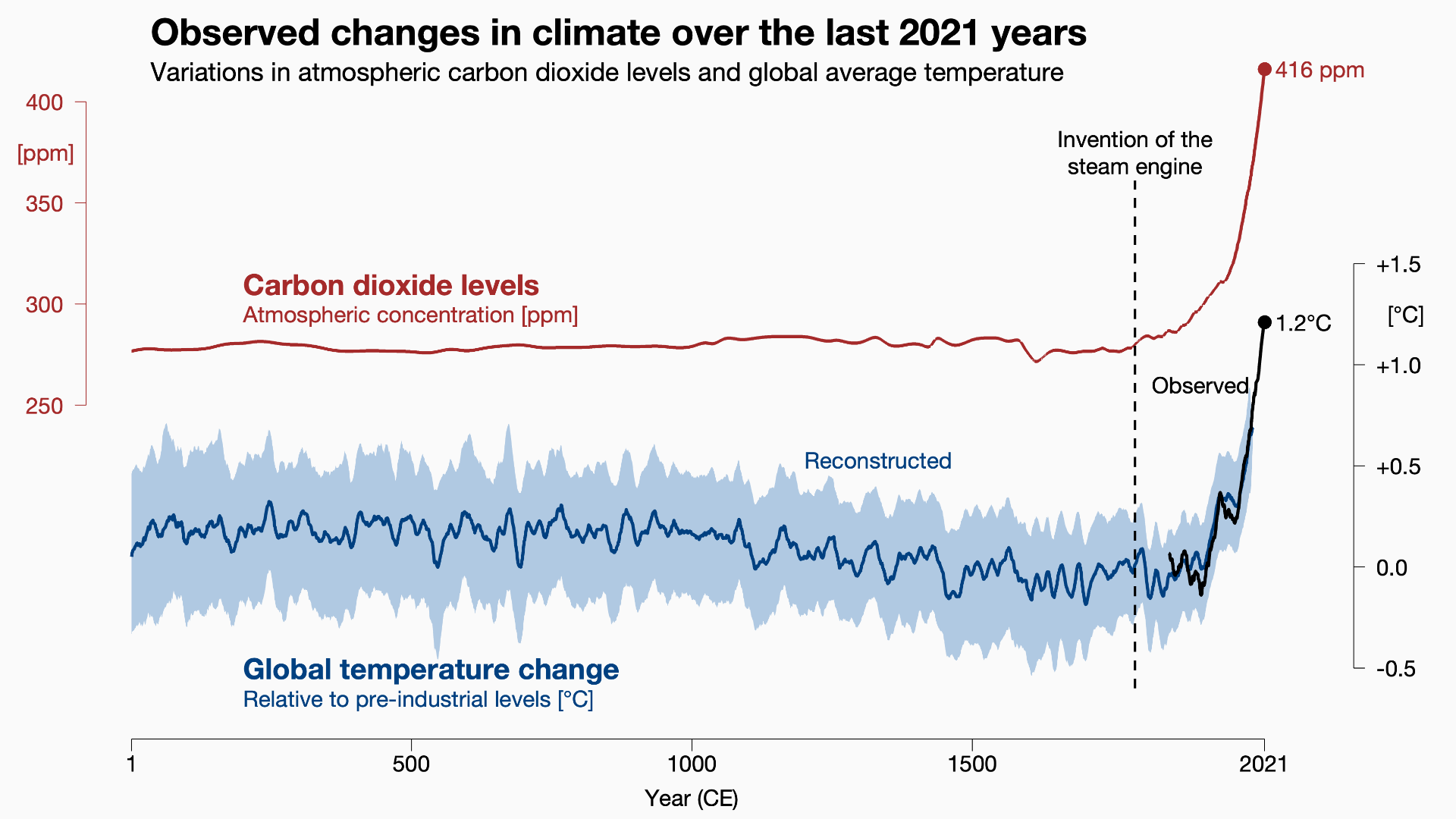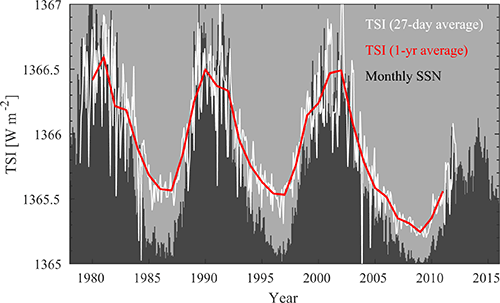Since I joined the University of Reading in 2005 as a research assistant, I have been using radars at the Chilbolton Observatory to study the processes in clouds. I’m very excited at the moment to be part of a collaborative project to make unique measurements of clouds with a new “G-band” radar being developed at the observatory. This radar is unusual because it operates at much higher frequency (shorter wavelength) than conventional cloud radars, and this allows us to do some interesting things.
Radars work by sending out electromagnetic waves into the atmosphere. The oscillating electric field in these waves makes the bound charges in ice or water jiggle around, and this, in turn, creates new waves, some of which find their way back to the radar and are detected as echoes. So this is really useful – it means we can tell where the clouds are (by timing how long it takes for the echo to reach us), plus we can tell something about how much stuff is in the cloud: more particles = a bigger echo; bigger particles = a bigger echo too.

Here’s an example of the kind of data we get from radar. The sky on this day was patterned with cirrus clouds (photo on the right). Cirrus clouds are clouds with a brush-like structure that are present in the upper part of the troposphere where it is very cold. They are composed of small ice crystals falling through the air. The data on the left hand panel is from a radar that sits and looks upwards at whatever clouds drift past. On the horizontal axis, we have time, while on the vertical axis we have height. So you can see these cirrus clouds were present between about 6000 and 9000 metres in height. The strength of the echo is measured as a “radar reflectivity”, and is a logarithmic unit. The higher the number, the stronger the echo, and a change of 10 dB on the reflectivity scale corresponds to a 10-fold increase/decrease in echo strength.
So there is lots of useful information in radar, but you can see from what I wrote earlier that interpreting the echo strength is ambiguous: how do I tell if the reflectivity I measure is caused by a lot of small particles or only a few larger particles?
The answer is to use a mixture of different frequencies. To understand why this helps, we can look at some simulations my colleague Karina McCusker did when she was investigating how ice crystals scatter electromagnetic waves. In this colourful figure below, she is sending radar waves in from the top of each panel, and visualising what the wave inside the crystal looks like. What you can see is that as we increase the frequency of the radar (top left = lowest frequency, bottom right = highest frequency), we get more and more wavey structure within the crystal, and the patterns become more complex. This directly affects how strong the radar echo is – the more wavey patterns we have inside the crystal, the more interference there is between waves scattered from different parts of the crystal when they come back to the radar as an echo.

We can exploit this interference because it tells us about how many wavelengths fit inside a crystal. And the bigger the crystal, the more wavelengths fit into it, and the bigger our interference effects will be. So by measuring the amount of interference (by comparing the size of the echoes at 2 or more frequencies) we can tell how big the particles were!
To make this work, we obviously need the radar wavelength to be comparable to the crystal size. In conventional cloud radars, the wavelength is several millimetres to a few centimetres, which is quite large compared to many particles in the atmosphere, such as the small ice crystals in cirrus clouds. This is where our new G-band radar comes in! Its wavelength is around a millimetre, and so, uniquely, it can measure the size of these tiny crystals.
The radar itself has been developed by experts in millimetre wave technology at Rutherford Appleton Labs, University of St Andrews, and Thomas Keating Ltd. It is a “demonstrator” instrument – proving the technology and data analysing techniques for this new type of cloud radar. We have now operated the radar in a few case studies – here is an example of measurements of rain and ice crystals:

Again, we have time along the horizontal axis and height on the vertical axis. This scene contains a mixture of clouds containing ice crystals (above 1200 metres) and raindrops (below 1200 metres). Karina is working on analysing the ice clouds, in this case, to estimate how big the crystals were and what shapes they had. She is correlating this against measurements with cloud probes on board the FAAM research aircraft.
Meanwhile, Ben Courtier (who used to be a PhD student here at Reading, and now works at the University of Leicester) has just published the first paper from the new radar, showing that in the rain we can measure distribution of drop sizes and even figure out what the updraughts and downdraughts of the air were!
This is a new and experimental instrument. In the long term, we’d like to make the radar even better by increasing the amount of power it can transmit, and making it autonomous so we can collect data 24 hours a day, 7 days a week.





 Figure 5: A schematic showing how energetic particles streaming into the Earth’s atmosphere at the Earth’s polar regions heat the upper atmosphere there, causing it to upwell and subsequently circulate around the globe, temporarily altering the chemical composition of the upper atmosphere.
Figure 5: A schematic showing how energetic particles streaming into the Earth’s atmosphere at the Earth’s polar regions heat the upper atmosphere there, causing it to upwell and subsequently circulate around the globe, temporarily altering the chemical composition of the upper atmosphere.
 Figure 2: The azimuthally averaged moisture budget of the 200 strongest TCs in the Northern Hemisphere over the period [1950-2015] in (a) CNRM-CM6-1 and (b) EC-Earth3.
Figure 2: The azimuthally averaged moisture budget of the 200 strongest TCs in the Northern Hemisphere over the period [1950-2015] in (a) CNRM-CM6-1 and (b) EC-Earth3.

























